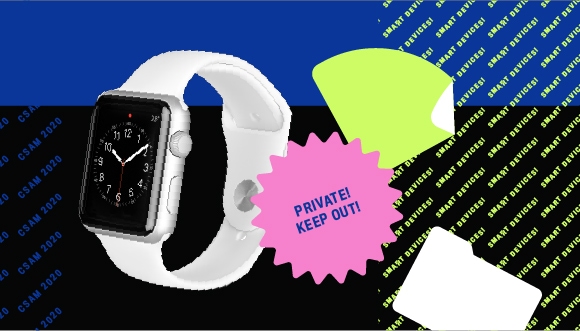In the past few years, the number of internet-connected devices in our homes (and on our bodies has skyrocketed. From smart thermostats to smart speakers, and even smart watches, internet-connected devices are everywhere.
With all these smart devices around, we should consider how they might leave us vulnerable to cyber attacks.
In this post, we’ll show you how you can get to know the settings on your smart devices that will help you stay more cyber secure.
Why cyber security matters for our smart devices
Smart devices contain information about us – information that, if it were to fall into the hands of a cyber criminal, could lead to us losing our personal information or money.
Like it or not, having smart devices in our homes and on our bodies leaves us vulnerable to attacks from cyber criminals.
For example: A cyber criminal might hack into your network and stop your devices from working (what’s known as a ransomware attack).
On your computer, this might prevent you from accessing files or using the internet. But with so many smart devices connected to your network, the consequences of a ransomware attack in the age of smart devices could be much more dire.
Imagine, for example, not being able to turn on your oven or turn up your thermostat – that’s a far worse outcome than being unable to just use a laptop.
That’s why focusing on cyber security for your smart devices is so important: It helps protect you against cyber attacks that can make it more difficult to live your life securely.
How to keep your smart devices secure
One of the challenges with improving cyber security for our smart devices is that they are so new.
Here’s the good news about smart devices, though: Many of the same tactics and measures that protect your laptop, phone or tablet also protect your smart devices.
Multi-factor authentication
Multi-factor authentication is one of the best ways to keep any device or account cyber secure.
If any of your smart devices offer two-factor or multi-factor authentication, use it. It’s a great way to ensure cyber criminals won’t be able to get easy access.
Software updates
Smart devices are no different than our laptops or smartphones. They run on software – software that frequently features updates from software developers.
These software updates don’t just feature user experience and design updates, though. They are designed to offer security updates that make access difficult for cyber criminals.
One of the best ways to protect your smart devices – or really any device – is to always keep that software update.
It’s the only way to ensure you’re getting the most of what software developers have to offer when it comes to cyber security for your smart devices.
Protect your Wi-Fi
The common element of most smart devices? They connect to the internet through your home’s Wi-Fi.
This is especially the case for smart home devices like kitchen appliances, thermostats or light bulbs.
That makes protecting the network they are on so important.
The good news is that there are a number of relatively simple steps you can take – from giving your router a unique name to changing the default password and setting up a guest network for visitors to use – to keep your Wi-Fi secure.
Those steps will go a long way towards protecting all the smart devices in your home.
Conclusion
Smart devices are (relatively) new additions to our lives. But that doesn’t mean we need to feel overwhelmed when it comes to keeping them secure Following these steps will go a long way to ensuring you make a cyber criminal’s attempts to hack into your smart devices look dumb.